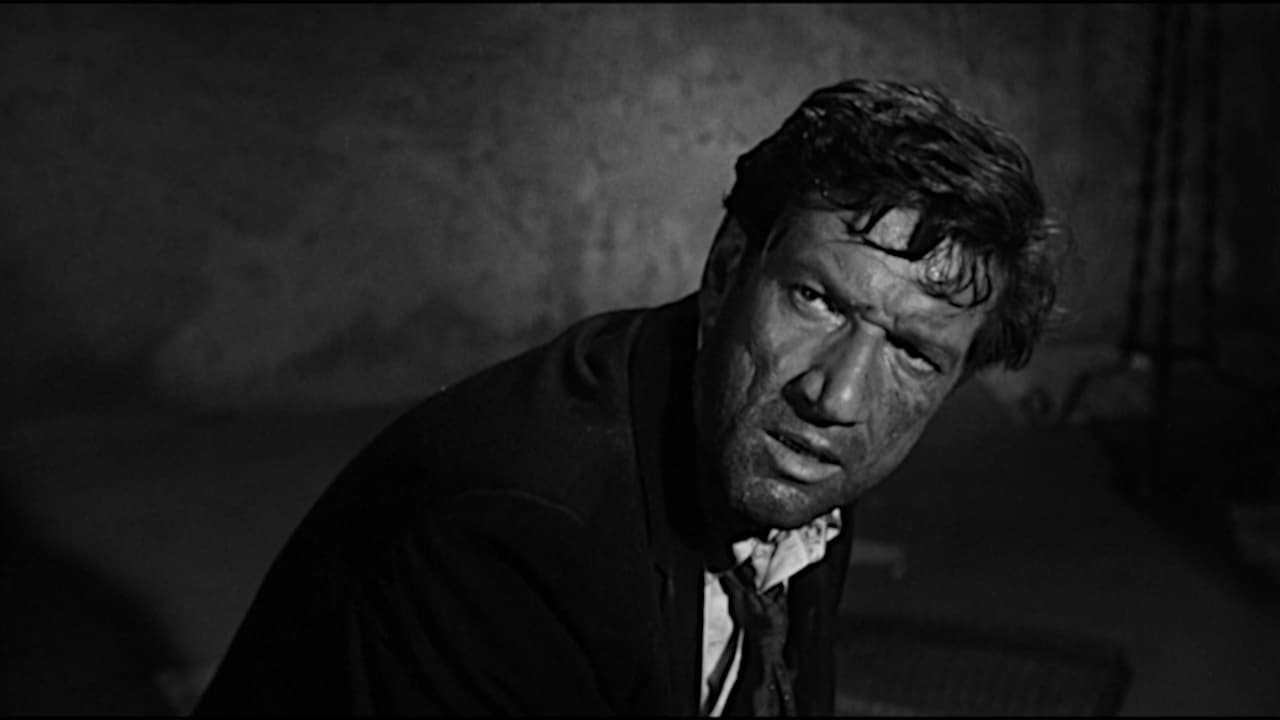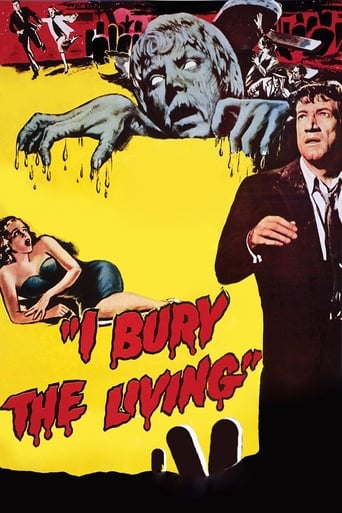

To me, this movie is perfection.
... View MoreI really wanted to like this movie. I feel terribly cynical trashing it, and that's why I'm giving it a middling 5. Actually, I'm giving it a 5 because there were some superb performances.
... View MoreA clunky actioner with a handful of cool moments.
... View MoreVery good movie overall, highly recommended. Most of the negative reviews don't have any merit and are all pollitically based. Give this movie a chance at least, and it might give you a different perspective.
... View MoreI've heard of this movie being referred to as just a long episode of The Twilight Zone and that is accurate for sure (and pretty perfect, I kinda wish I had come up with the comparison myself). It's moody and a little silly at times and dramatic and while the ending was a disappointment, it has such an original storyline leading up to it that you can almost forgive it. (Almost.) Directed by Albert Band (father of Charles Band, who is known for quite a few B movies himself), it was referenced as a favorite of Stephen King's back in his 1981 non-fiction book Danse Macabre, though even he criticized the ending.Robert Kraft (played by Richard Boone, who was primarily known for his roles in Westerns at the time) is to take over as chairman of a committee that oversees Immortal Hills Cemetery, much to his chagrin. As he is learning the ins and outs of operations from the caretaker, Andy (Theodore Bikel), he is shown the cemetery's map, where pins are used to mark the plots — white for the living and black for the dead. When he accidentally marks a newly wed young couples' recently acquired plot with black pins instead of white and they turn up dead the next day, he becomes suspicious, and upon further testing seems to realize he has the ability to take lives with the simple placement of a pin ** SPOILERS! **This movie surprisingly flies under the radar considering how solid of a film it is. It's no masterpiece, but I thought the acting was great (particularly by Boone) and the atmosphere throughout is fantastic.The thing that got me was how much it focuses on Kraft being wracked with guilt. This is not a movie where someone realizes they have some kind of supernatural power and uses it to exact revenge, or even for some kind of vigilante justice he is just straight up horrified about the power he wields and is consumed with regret. He doesn't believe it's simply the map that holds the power, since others have come before him and utilized the same map he believes it's the combination of the map and something evil inside of himself. "I destroyed them. Something in me killed them."There's one shot in particular when he is sort of staggering around the office after he has decided he must also be able to bring people back to life by changing their pins to white. He is bumbling around and locking the doors and windows and he comes to rest against a locked window and you see him in silhouette from outside the building and then they used a sort of zooming out effect with the film and just awesome.There's all of this tension and dread building up after he runs around the cemetery and finds the graves of the people he supposedly killed all dug up — you start to think that he was right, he has brought them back from the dead, and who knows what their plan is now? But then — after a particularly tense (and brilliantly shot) scene with the caretaker, we realize it was simple murder all along. The guy is angry that his job was being taken away (they simply offered him a retirement plan so the dude could chill a bit in his old age) so he went on a killing spree. It's an awesome scene, really — he's standing under a single light as the banging from the outside (which turns out to be the police) gets louder and louder, giving his explanation to Kraft — but it's a bummer of an ending since the whole supernatural story was a fascinating one. It almost felt lazy, as if they didn't know quite where to go so they pinned it on the caretaker. A let down, for sure.But overall, totally worth the watch, if for nothing else than the awesome use of lighting and simple techniques to evoke dread and tension.
... View MoreIf this had come out just one year later, it could have made a great episode of "The Twilight Zone". The idea is certainly interesting, but at feature length the story feels padded and repetitive; after the third black pin and the third death we have already accepted the film's premise but Richard Boone keeps sticking the pins on the map, which would make more sense if his character turned evil, but he doesn't. Albert Band's direction is a plus: some of the visual effects he comes up with are ahead of their time. But the ending of the film is disappointing. It's a surprise, all right, but it's a bummer of a surprise. Not to mention that it doesn't stand up to much scrutiny. **1/2 out of 4.
... View MoreJust watched it on Netflix and I was shocked at how good this was.Unfortunately, no one saw fit to keep the film in good shape, so it doesn't look good, and the audio is very tinny.When I read the plot summary for this film, I was sure I was in for a disappointment. I was certain that we'd have a villain who discovers he has a power, keeps it a secret, and uses it to his advantage.Nope, the main character is actually the protagonist, and his power is the antagonist. Could he really have to kill, just by placing a pin in a map, or is it all just coincidence? The only way to know is to test it. Ultimately, his colleagues FORCE him to test his power, to their own demise! The dialogue, acting and some of the direction were really, really good.Look past the film quality and recognize the elements that shine in this very, very unique film, especially if you love weird tales.If I were to bill a double feature with this as the first film, the second film would be Village of the Damned. Great pairing right there.Check it out, for real!!!!
... View MoreThen try the men who run the cemeteries where the work of those usually tall, lanky Lurch like men ends up, if not in some crematorium. Creepy cemeteries have haunted audiences ever since the silent movies, and this one is a definite rise above the cardboard headstones of "Plan Nine From Outer Space". There aren't any grave robbers here; In fact, there seems to be a goal in filling up the cemetery rather than taking bodies away for medical experiments. Richard Boone is the new director of the cemetery and as soon as he takes over, the bodies of the board members begin to pile up as the pins on the maps change from "white" (available) to "black" (unavailable), even though the grave plots for the board members have already been purchased. The map gets more sinister looking as the film goes on, looking like a pair of evil eyes staring down at whoever enters the office with definite evil intentions.Right before taking on the role of Captain Von Trapp in the Broadway production of "The Sound of Music", Theodore Bikel added old age make-up to his handsome face to play the very Scottish cemetery handyman who is put out to pasture with a lifetime salary guarantee. He spouts all sorts of Scottish wisdoms as if he was MacBeth on acid, and it is a hoot to behold. Richard Boone is the frantic new director who believes that somehow he might have become possessed to kill off the board and even seems to suffer from blackouts. Obviously made on the cheap, but convincingly set up, this is better than a lot of shock fare released on either the big screen or in drive-ins during the late 50's. One of the cast members, very recognizable, is Herbert Anderson, the wise father of none other than "Dennis the Menace".
... View More